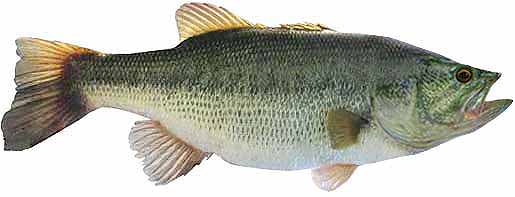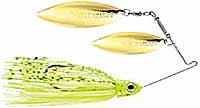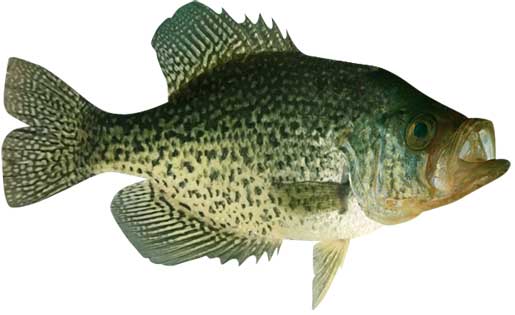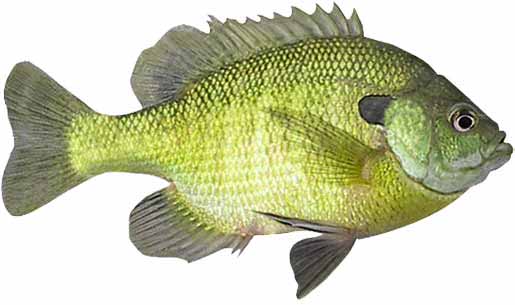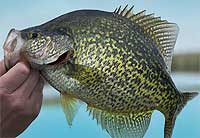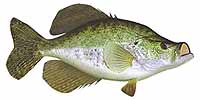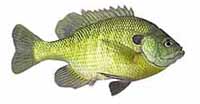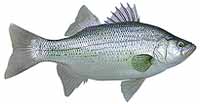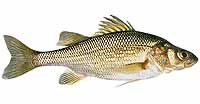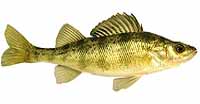Fishing Report For Falls Lake, NC
By Rick Seaman
Last updated on .
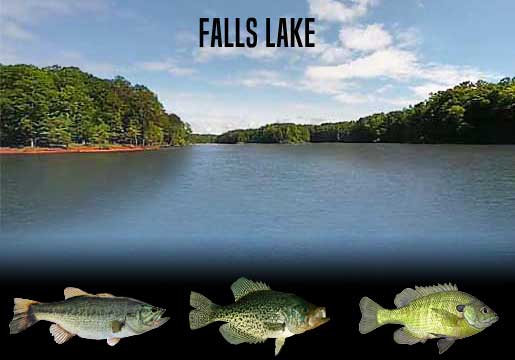
Falls Lake, a great destination for fishing
Visit Fall Lake for great bass fishing or for catching nice crappie and bluegill. Fishing for catfish, white bass, perch and striped bass are good as well.
Fishing Video
Most Popular Fish Species In Falls Lake, NC
Largemouth Bass
Current Report: Good To Very Good
Falls lake is home to big bass. According to reports by local guide Jeffrey Davis, "February is a good time to catch big bass. ...After the spawn is over, bass move out to ledges on the main lake during the summer months". When bass are shallow I like to use mid-range crankbaits, like the Rapala DT-6. Around brush, wood and vegetation I prefer a spinnerbait or plastic worm.
FALL. Now that Fall has arrived, bass here have moved shallow, following schools of baitfish into coves and shallow bays around 4 to 10 feet of water. Currently topwater, jerkbaits, crankbaits, and are catching most of the bass. Later in Fall, as deeper water cools, bait and bass move out to ledges, channel edges, points and humps where flutter spoons, jigs and slow-rolled spinnerbaits are often good choices.
WINTER. Winter will isolate them around slightly deeper structure, flats, points and creek channels. They can be found from 15 to 25 feet deep. Here they hold, feeding less frequently, awaiting warmer water to return in Spring.
SPRING. Once water temperatures rise into the low 60's, largemouth will move from deep wintering holes, to shallower water nearby spawning areas. Vibrating jigs, jerkbaits and spinnerbaits typically get bites just away from the shoreline. At this time they are feeding aggressively in about 10 to 15 feet of water, and preparing for the spawn. Once water warms into the mid to high 60's, they will move into 2 to 4 feet of water, and create nests, then lay their eggs. Immediately afterwards, females move to deeper water and males remain to guard the eggs, and then the fry. After a couple weeks, the males also move to slightly deeper water. Crankbaits, vibrating jigs, plastic worms and swimbaits are catching bass during this period.
SUMMER. Water temperatures will warm considerably in Summer. Bass will feed shallow, early and late in the day, where they will be caught on topwater, crankbaits and swimbaits. Wacky-rigged stick worms always catch finicky bass when the bite is slow. Largemouth bass here feed on gizzard shad, threadfin shad, small sunfish and crawfish. During the hotter parts of the day, they are being caught on points, channel edges, and ledges 20 to 25 feet deep.
Black Crappie
Current Report: Good
FALL. Locals also report good crappie fishing from October through December. Baitfish, which are moving into shallow flats, coves and bays, are drawing crappie into these areas. They are feeding heavily in preparation for the cold Winter, in 10 to 15 feet of water. Standing timber in Big Lick Creek is a popular spot for crappie. Minnows, hair jigs, and crappie jigs, are good options during this feeding marathon. Late fall starts the migration deeper, toward winter holding areas, for both crappie and baitfish. Small flutter spoons are a good option during this transition
WINTER. Once the shallows start cooling rapidly, crappie will migrate to deeper holding areas, mostly off shore. At this time they are typically caught using a very slow presentation, in 15 to 20 feet of water. If they are suspending in open water, they often relate to some cover, or structure change, directly below them.
SPRING. Locals report good crappie fishing from April through June. In early Spring, crappie begin staging in 3 to 8 feet of water, just outside spawning bays and shallow flats. Spring is prime time to be on the water, as crappie have moved shallow to spawn. At that time, they are typically caught in 2 to 4 feet of water. Vegetation, docks, brush and wood are where most anglers catch crappie using small crappie jigs or live minnows. After the spawn, crappie typically move outside the spawning area and hold on cover close by in 10 to 12 feet of water. Once they move even deeper, anglers report success using fish finders and forward facing sonar to locate schools of crappie, which tend to stack vertically around cover. Light tackle, with 4 lb to 8 lb line, is a popular choice.
SUMMER. Water temperatures warm, and crappie fishing is usually pretty good. Now that the spawn is over, and the hot Summer sun is warming the shallows, crappie have retreated to depths of 12 to 20 feet, or embedded in the shade of heavy vegetation. This is a good time to focus around bridge pilings and deeper timber. Anglers are also locating schools of crappie hanging over deep structure and around creek channel edges.
Bluegill
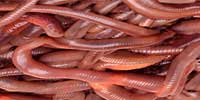
Current Report: Fair To Good
As a prime food source for the big bass roaming Falls Lake, bluegill maintain a healthy population here. The water is so fertile that bluegill, which survive the bass, can grow to well over 3 pounds. My favorite bait for bluegill is small pieces of nightcrawlers. Also, larger bluegill are often caught on small crankbaits while bass fishing.
FALL. Cooling, Fall weather drops the water temperature in the shallows and is luring bluegill into2 to 8 feet of water along the shoreline. Steeper banks, and shallow, weedy areas with drop-offs, are holding bluegill. Later in Fall, as the shallows get colder, bluegill will move slightly deeper in the same areas.
WINTER. Cooling shallows have driven the bluegill back to deeper cover, in water ranging from 5 to 15 feet deep. In areas with no cover, anglers typically find them around sharp drops into deeper water.
SPRING. In early Spring, bluegill migrate from winter holding areas toward the shoreline areas, and are typically caught around 5 to 8 feet deep. As the water warms to the mid 70's they will begin the spawning ritual, building nests in 1 to 4 feet of water. Many of the bigger bluegill prefer to spawn a bit deeper, depending on water clarity. Small spinners and swimbaits, or jigs tipped with small pieces of nightcrawlers are good choices for catching a lot of bluegill in spring. A hook, line, weight and bobber with small pieces of worms also catches lots of bluegill.
SUMMER. Following the spawn, most of the bigger bluegill migrate to deeper water, around 8 to 12 feet deep. They prefer rocky or weedy areas, often hanging out on steep, rocky banks where they can move up and down to feed without having to travel a great distance. Small spoons, underspins, and mini-crankbaits are catching some of the bigger bluegill. Earthworms are also catching good numbers.
Fish species to fish for...
Guide to fishing for largemouth bass, channel catfish, flathead catfish, blue catfish, black crappie, white crappie, bluegill, white bass, white perch, yellow perch, striped bass and chain pickerel at Falls Lake in North Carolina.
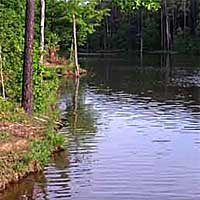 Falls Lake, in North Carolina, is a 12,000-acre reservoir with 175 miles of shoreline, is well known for excellent bass fishing, and home to many bass tournaments annually. Submerged trees, rock formations, and vegetation, provides ideal habitats for bass, crappie, catfish, striped bass, and others
Falls Lake, in North Carolina, is a 12,000-acre reservoir with 175 miles of shoreline, is well known for excellent bass fishing, and home to many bass tournaments annually. Submerged trees, rock formations, and vegetation, provides ideal habitats for bass, crappie, catfish, striped bass, and others
Fishing Pier
The Falls Lake Fishing Pier offer easy access for anglers to fish without a boat.
Primary fish species to catch
Click images for fishing tips and details about each species.
Today's Weather & Forecast
Fishing Boat Rentals
Click here for fishing boat rentals.
Marinas
Click here for marinas.
Public Boat Launch Ramps & Landings
Click here for boat ramps.
Click here for a North Carolina Fishing License.
Map - Fishing & Access
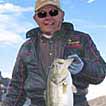 Rick Seaman is a fishing enthusiast with over five decades of fishing experience, a retired tournament fisherman, author of numerous published articles on fishing, and co-author of the book "Bass Fishing - It's not WHAT you throw, It's WHERE you throw it".
Rick Seaman is a fishing enthusiast with over five decades of fishing experience, a retired tournament fisherman, author of numerous published articles on fishing, and co-author of the book "Bass Fishing - It's not WHAT you throw, It's WHERE you throw it".
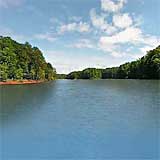 Contact Information
Contact Information
Falls Lake State Recreation Area
13304 Creedmoor Rd
Wake Forest, NC 27587
919 676-1027
Fishing lakes in each state
100625
Falls Lake, North Carolina Report
NORTH CAROLINA


Catfish, bass, white bass and stripers fishing in northeast NC.


